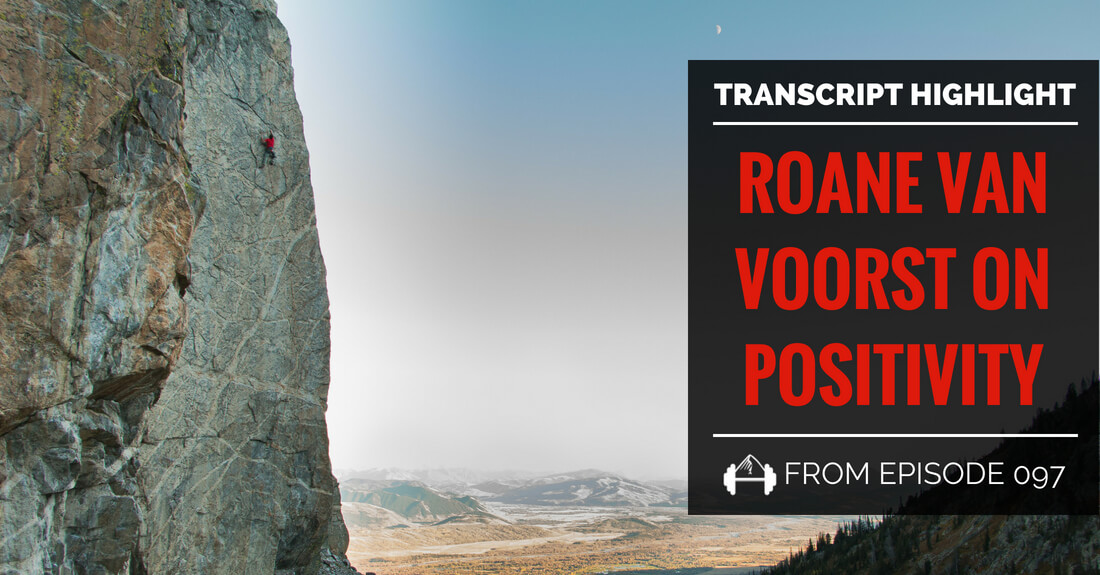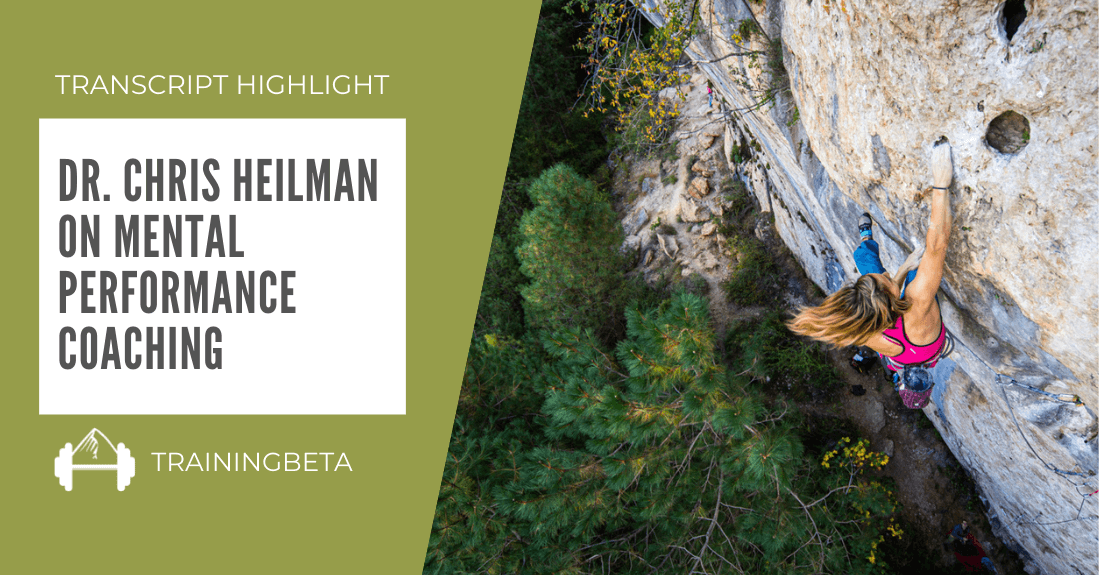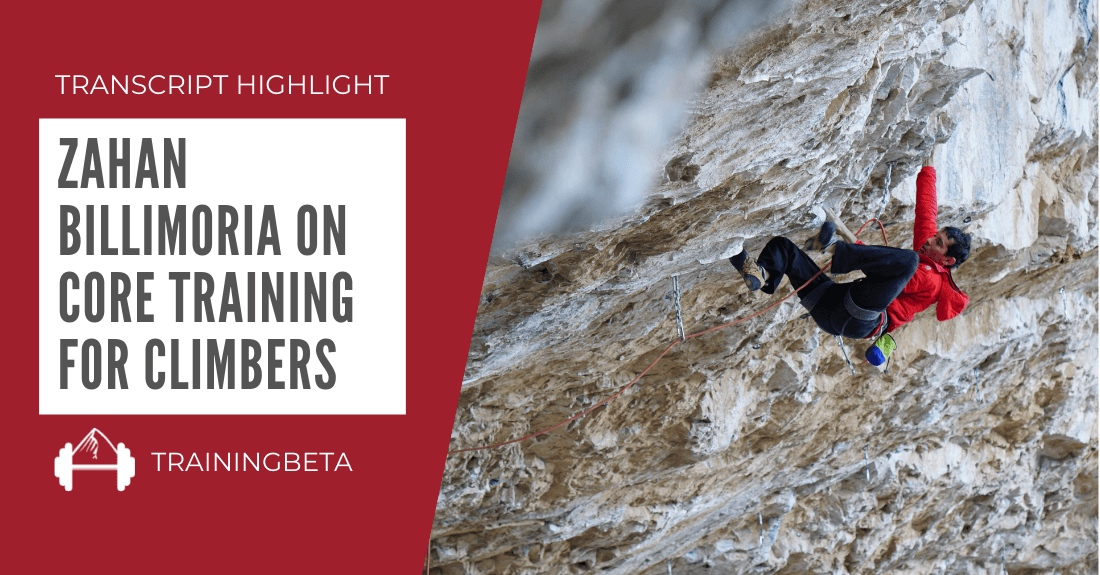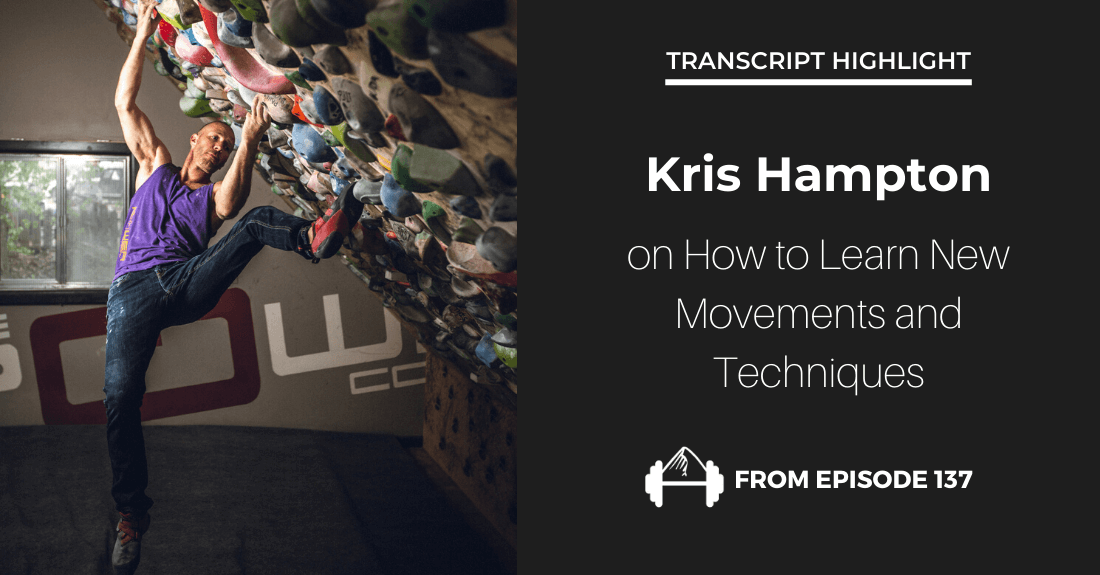Over the past couple of weeks, I (Matt Pincus) have been sharing excerpts from Neely’s conversation with Dutch climber and researcher Roane Van Voorst. So far we’ve looked at how Lynn Hill deals with fear and how Hazel Findlay practices dealing with fear on an ongoing basis.
I’m sharing these excerpts because I believe they really highlight the importance of climbing’s mental components and give us concrete actionable advice. In my coaching, I see so many athletes who are much stronger than the grade they climb. They aren’t climbing lower grades as a result of physical shortcomings. Instead, they self-sabotage and undermine their performance through an underdeveloped mental approach.
So far, the two excerpts we’ve looked at deal with fear and specifically the fear of falling. I chose these first because fear is a hugely limiting factor in so many peoples climbing. However, if we look at improving our mental approach as a way of maximizing performance, not being afraid is just a starting point.
Our minds are incredibly powerful and our headspace has a huge impact on the quality of our climbing. I don’t pretend to have all the answers here and it’s something I am still actively exploring. However, in both my coaching and my personal climbing, I have found positivity and specifically the ability to stay positive even when things aren’t going well hugely important.
Unfortunately, as with most mental training techniques, it’s not as simple as just saying you’re going to stay positive. To highlight the complex role of positivity, here’s an excerpt from the episode where Van Voorst discusses how highlining world record holder Alexander Schulz achieves an optimal headspace through positive thinking.
Roanne Van Voorst on Positivity
Roanne Van Voorst: Yeah, and for example, the world record holder in highlining, Alexander Schulz, he said a similar thing, where he said “I kind of train myself to let go of everything that is not helping me on the line”. That might be negative thoughts, but it might also be feelings, like shame, when there is an audience and he feels like he has to perform. Or anger, or whatever you bring to the crag, or in his case to the line. He kind of really consciously sets those aside while he is working on his line, because he has just become aware of the fact that they are really, really distracting. It’s often that if you start training yourself on even noticing how many negative things you say to yourself, it’s incredible. I mean, just for me, myself, often times even before trying I’ll be like “Oh that looks hard”. Which is not really useful, because I also know that the closer you get, sometimes there are holds everywhere, or there is something that I hadn’t seen, or there is a solution outside of the box. Why even mention it, and emphasizing that it looks so hard? It’s almost finding an excuse for why you won’t be able to climb it.
Neely Quinn: Yeah. So going back to Alexander Schulz- he says that he lets go of everything that is not helping him at the moment. That seems easier said than done, right? That must have taken him a lot of practice. Did he go into how he cultivated that?
Roanne Van Voorst: Yeah he does. So what he says is that he has been practicing a lot with trying to not think those things. Which obviously, wasn’t working. Then, he tried something else, namely as soon as he felt that a negative thought was coming up, he exchanged that for a more positive thought, or for a focus point. What he does is instead of not thinking some things, and then kind of expecting that your mind is going to be this empty white space where you can focus, he just fills it up with positive sentences that he made for himself. The interesting thing there, that he said, was that he has been experimenting with mantras that almost make you feel like superman. Like, “I can do everything”. But they didn’t work for him at all.
Neely Quinn: Oh.
Roanne Van Voorst: Because he said “You kind of have to believe in them. They kind of have to feel realistically”. What he does now is just having mantras that he actually believes. For example, he was telling me that when he was in China walking his highline, there was a lot of void, which is obviously scary. If you are halfway on your line, you still have twenty minutes to go, you have twenty minutes behind you. There is wind, and so the line starts moving a lot. For him, at that moment, it just didn’t feel right to think “Oh, I can do this. I can do everything”, because he really doubted whether he could do it. What did help him was to think “I’ve walked over my line when it was windy before”. Just that simple mantra was fair to him, and so he could wholeheartedly believe in it. Like “Yeah, I’ve done this before, so why would it be different now?”. That was a very humble mantra, so to say, but for him it worked. I can kind of relate to it. Like if I would tell myself, “Oh I’m the best climber in the world, I’m going to do this!”, it’s just like, no you’re not. It’s a 5.14- there is no way. But if I can find a sentence that kind of feels real to me, whether that be that I’m just going to focus on my growth, or that I can always see whether I can make the first moves, or let’s just try it, just be open to whatever happens. Those are more realistic, but nevertheless positive, almost curious thoughts. I think that’s a nice advice, to kind of experiment with positive thoughts that you want to take with you onto the crag.
Full Episode/Transcript: TBP 097 :: How to Overcome Fear in Climbing with Author Roanne van Voorst
(photo by Matt Pincus | @mpincus87)
Other Articles You Might Like:
- Don McGrath – Too Much Positive Thinking?
- Ego and Rock Climbing
- TBP 096 :: Sports Psychologist Chris Heilman on Imagery and Setting Realistic Goals
- TBP 023 :: Arno Ilgner on Overcoming Fear and Ego in Climbing






Leave A Comment